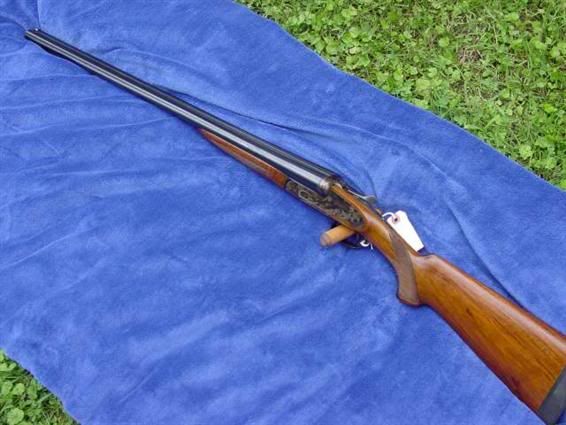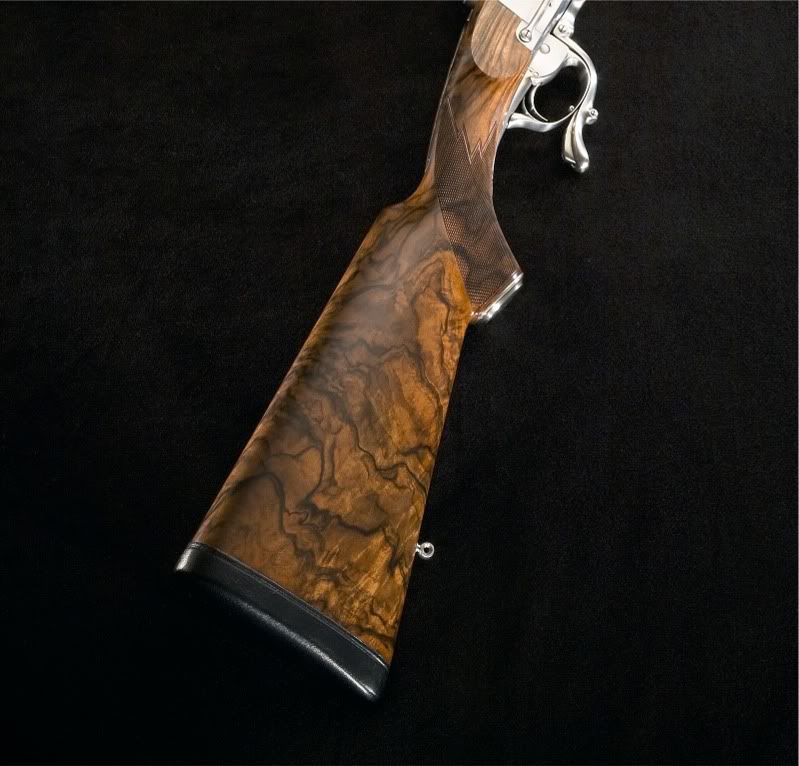Educate an uninformed lad on English Walnut - 07/07/11 12:10 PM
Made a trip to a local gunstock blank provider located in Virginia yesterday just to see what he had. He supplies mostly to the flintlock long rifle crowd with loads (i.e. 1,000's of blanks) of curly maple. He does however have quite a bit of local black walnut as he purchases tree's from Iowa to NC to Pa. Anyway, when I called him I was inquiring about whether he might have a bit of English available and he said yes and I made the trip.
What I uncovered is all of the English he has is harvested locally for the most part. All cut from various old estates in the area (Middleburg for example). He said English walnut while fairly rare to find in the east is still here. He also said that while he has pretty highly figured wood (very nice curl for example), it doesn't have the dark streaks which English has in other parts of the country (California for example).
My question is if they are all pretty much the same species, why no dark streaking here? Is the big difference the type of soil here as compared to out west?
He actually had a fair amount of english, all dense with small pores with lots of it quartersawn (my personal favorite). Looking through loads of it yesterday, the only thing I think it lacks is indeed the mineral streaks.
Also, as part of my education process, I've noticed that quite a few of the Ruger Number one's were made with Circassian (fancy name for English) walnut under the Boddington African series. I've seen a fair number of those at gunshows and such and none I've seen have the marbling/dark streaks that appear to me. They all however seem to be laid out correctly and be pretty dense.
Appreciate any pictures that might be available. FWIW, I have read Pete's H's Walnut primer, but would appreciate any other thoughts. If any one wants to know who the local merchant was, please drop me a PM.
PS. Just as a note, this fellow cuts his wood in 3" thick pretty much huge sections. Everything is stickered and stored in warehouses for at least two years and then it goes into his kiln. The ends of everything I saw was sealed as was any crotch areas.
What I uncovered is all of the English he has is harvested locally for the most part. All cut from various old estates in the area (Middleburg for example). He said English walnut while fairly rare to find in the east is still here. He also said that while he has pretty highly figured wood (very nice curl for example), it doesn't have the dark streaks which English has in other parts of the country (California for example).
My question is if they are all pretty much the same species, why no dark streaking here? Is the big difference the type of soil here as compared to out west?
He actually had a fair amount of english, all dense with small pores with lots of it quartersawn (my personal favorite). Looking through loads of it yesterday, the only thing I think it lacks is indeed the mineral streaks.
Also, as part of my education process, I've noticed that quite a few of the Ruger Number one's were made with Circassian (fancy name for English) walnut under the Boddington African series. I've seen a fair number of those at gunshows and such and none I've seen have the marbling/dark streaks that appear to me. They all however seem to be laid out correctly and be pretty dense.
Appreciate any pictures that might be available. FWIW, I have read Pete's H's Walnut primer, but would appreciate any other thoughts. If any one wants to know who the local merchant was, please drop me a PM.
PS. Just as a note, this fellow cuts his wood in 3" thick pretty much huge sections. Everything is stickered and stored in warehouses for at least two years and then it goes into his kiln. The ends of everything I saw was sealed as was any crotch areas.







